![]() Japanese Garden にほんていえん(日本庭園)
Japanese Garden にほんていえん(日本庭園)
Garden design is an important art form in Japan and there are many famous and beautiful gardens in Japan and in many other countries (designed in the traditions of Japan). Traditional landscape gardens can be broadly categorized into three types: Tsukiyama Gardens (hill gardens), Karesansui Gardens (dry gardens) and Chaniwa Gardens (tea gardens). Japanese gardens are famous for their beauty in all seasons of the year, but especially in the Fall, for the もみじがり(紅葉狩り)or “fall leaf hunting” season, and in the spring for the おはなみ(お花見)or “cherry blossom viewing”. Japanese gardens are used to enhance all kinds of seasonal activities and holidays such as walking down wooded paths, taking part in tea ceremonies, and enjoying the company of family and friends for cherry blossom festivals.
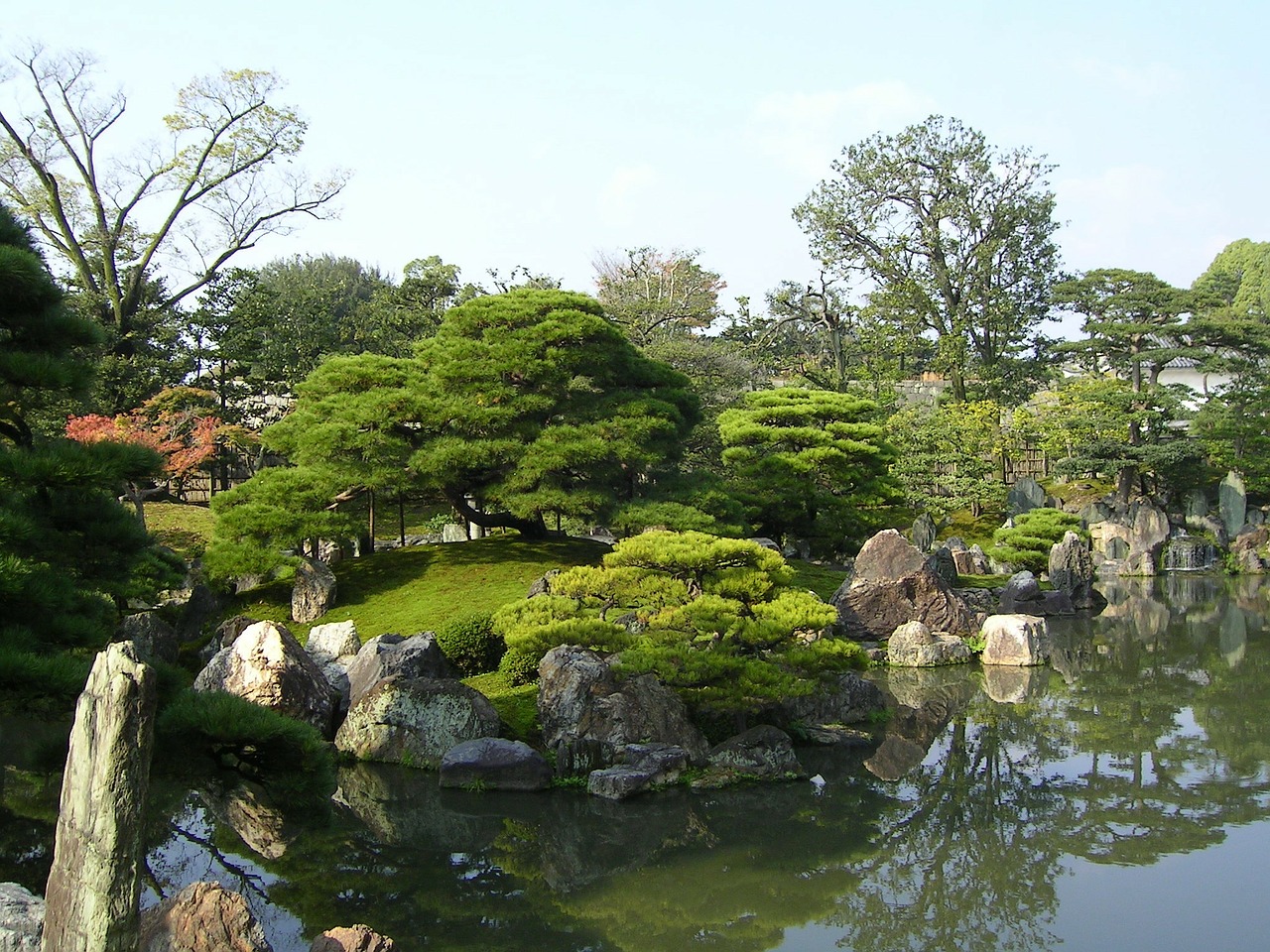
Pixabay: CC0 Tsukiyama Gardens (hill gardens)
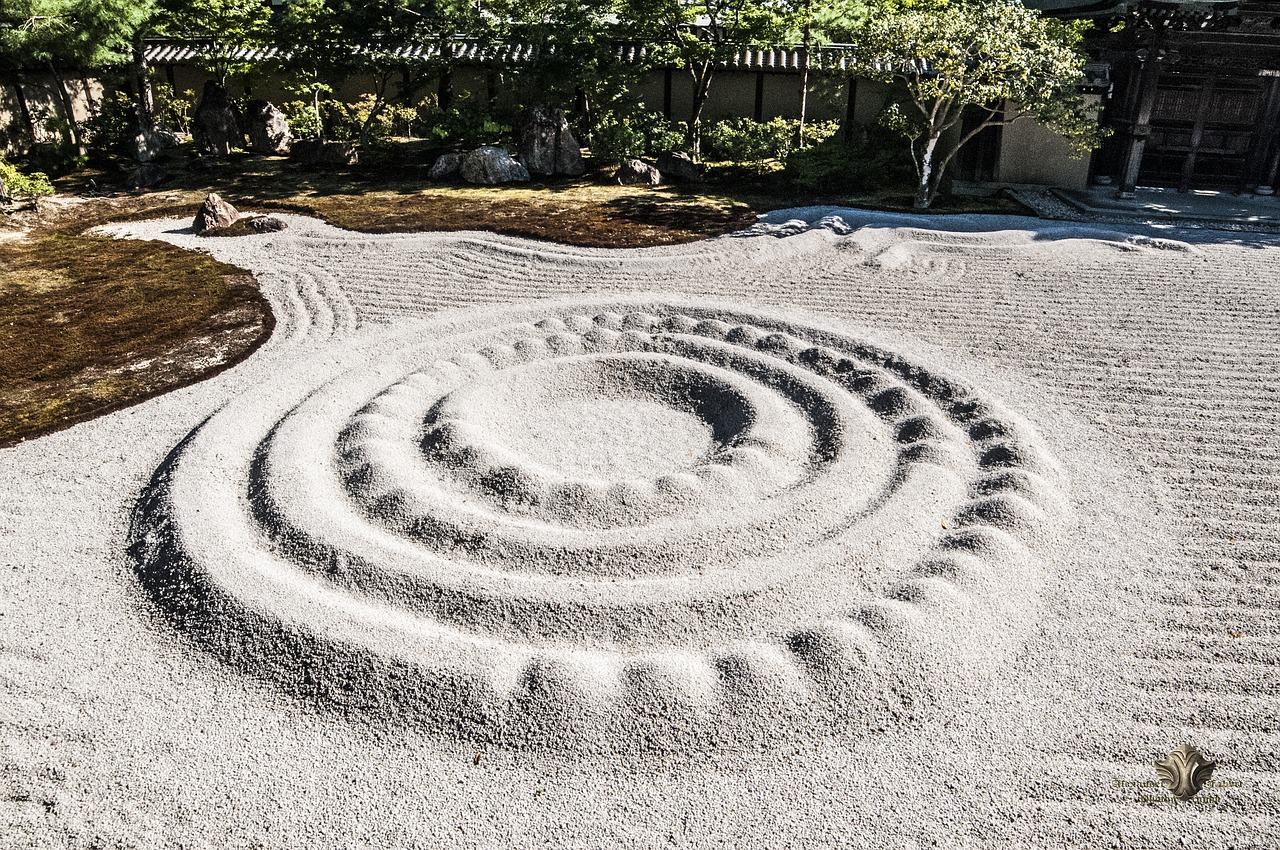
Pixabay: CC0 Karesansui Gardens (dry gardens)
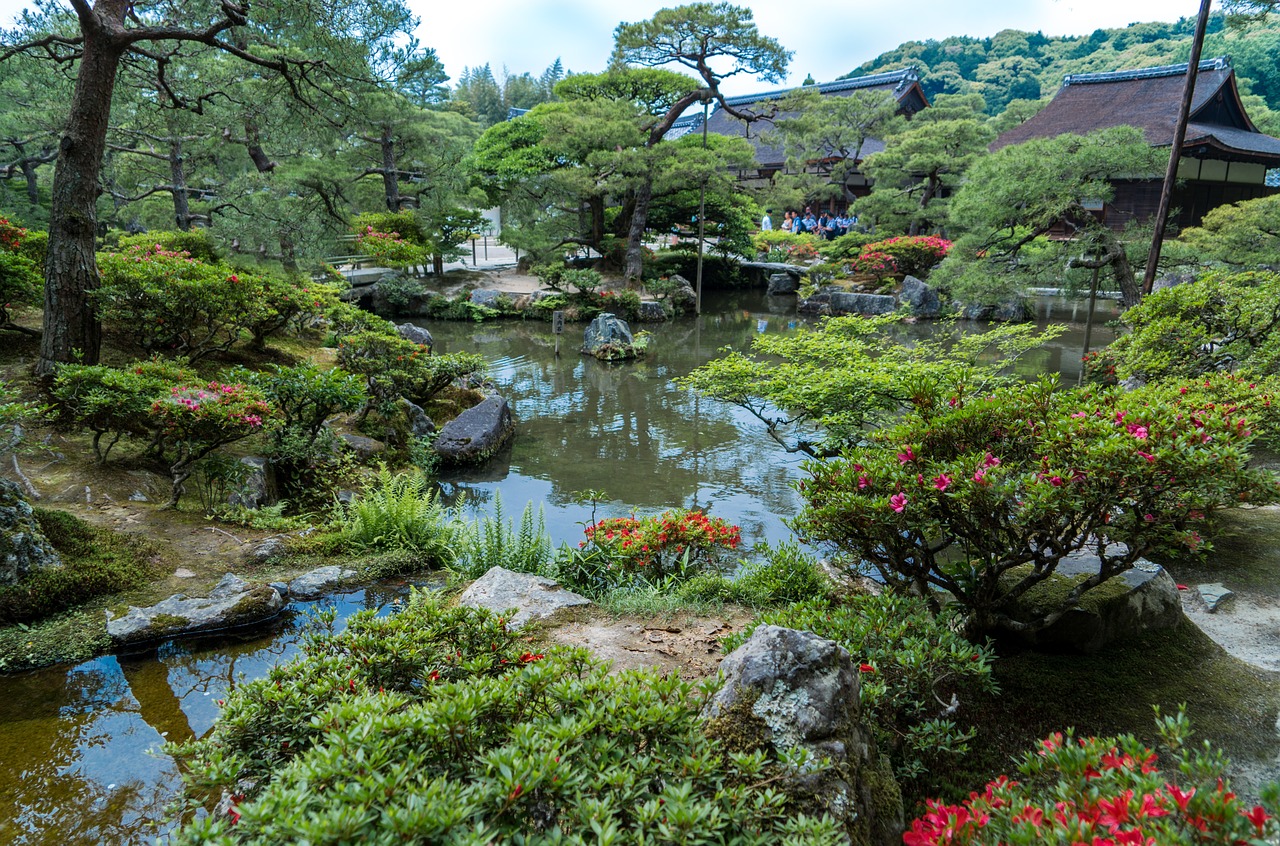
Pixabay: CC0 Chaniwa Gardens (tea gardens)
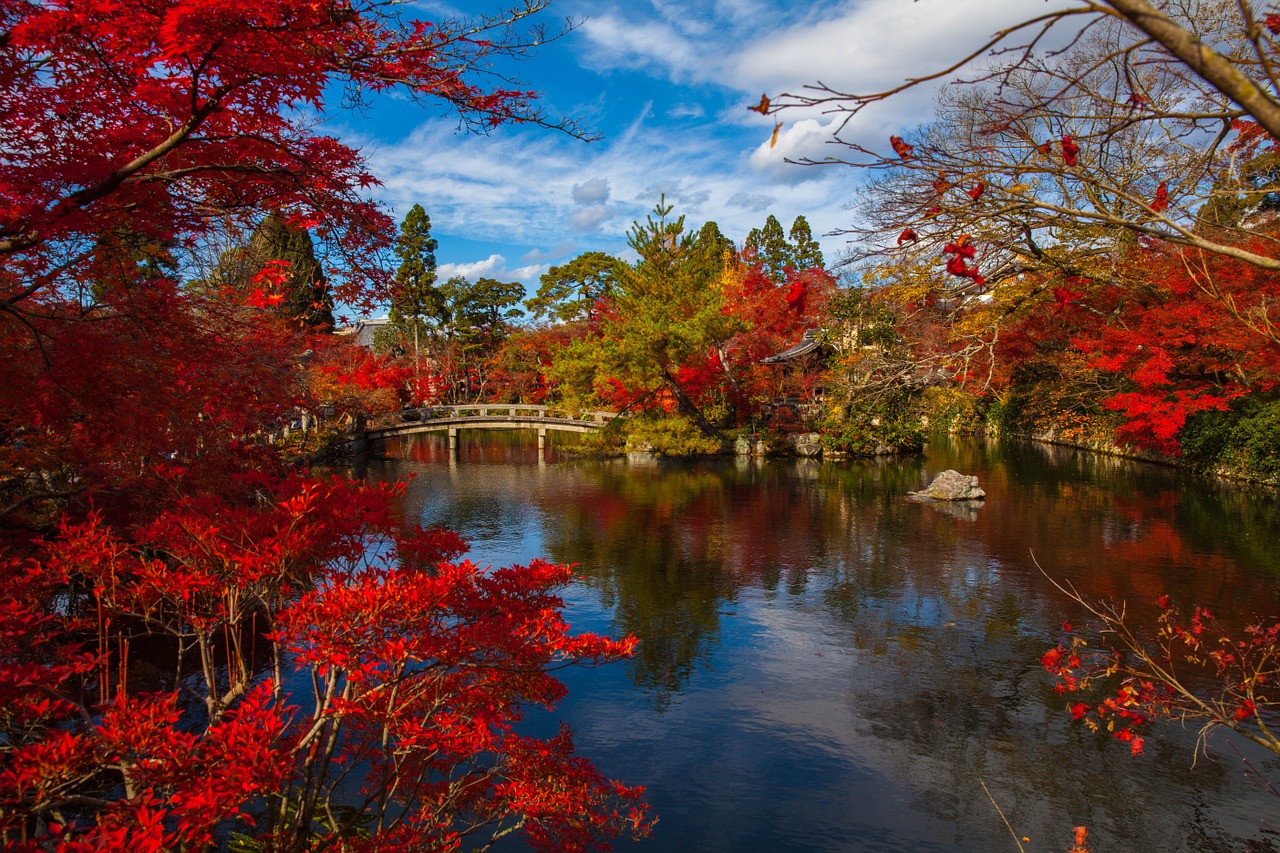
Pixabay: CC0 Japanese Fall Foilage
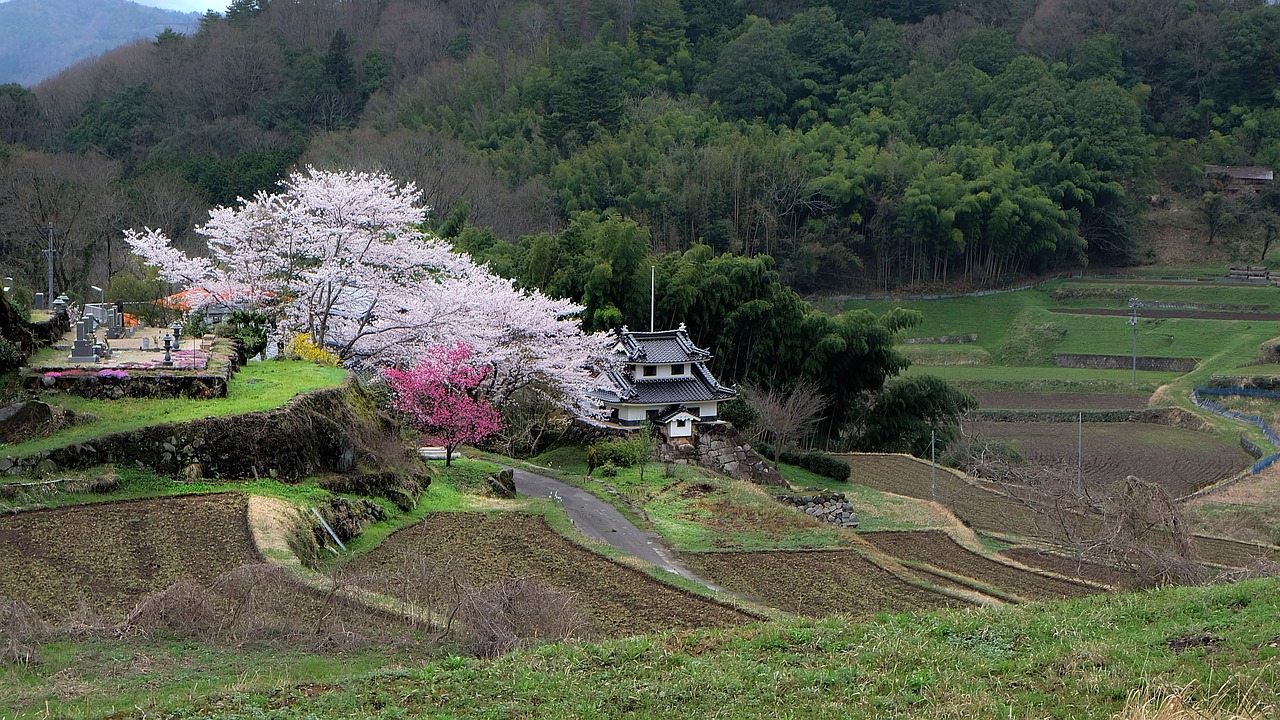
Pixabay: CC0 Cherry Blossoms in Japan
![]() Culture Notes
Culture Notes
Sitting techniques: In Japan, sitting upright on the floor is common in many situations. For example, meals are traditionally served sitting on the tatami floor around a low table. Also during the tea ceremony and other traditional events people typically sit on the floor. Many visitors from other countries have a hard time sitting on tatami mats for long periods of time, but traditional restaurants will offer tables that have recessed areas them that allow the guests to sit on the floor, but dangle their feet below.

The formal way of formally kneeling on the floor is called seiza せいざ(正座). This is typically used in more formal situations, but even then, a more casual style of seating is allowed after the event has begun and introductions have been made. For more casual occasions, men sit cross-legged, while women sit on their knees but with both legs off to one side.
Seating order: The most important guest sits seated in the “seat of honor” or かみざ(上座)which is usually located farthest from the entrance to the room. If there is a traditional “nook” called a とこのま(床の間 in the room, the guest should be seated in front of it. The host or least important person will generally sit next to the entrance or しもざ(下座).
Getty Images: Women dressed in kimono sitting in seiza by paylessimages
![]() Practice Questions
Practice Questions
Practice answering these questions that use different verb forms you reviewed in Units 1 and 2. Be sure to note the different verb forms and how the meaning of the questions and answers changes with each form. You will see confirmation of your answers in both forms by clicking on "こたえ" at the end.
| にほんごを べんきょうしていますか 。(日本語を 勉強していますか。) | はい、べんきょうしています。(はい、勉強しています。) |
| いま、おんがくを きいていますか。(今、音楽を 聞いていますか。) | いま、おんがくを きいていますか。(今、音楽を 聞いていますか。) |
| しゅくだいをしますか。(宿題を しますか。) | はい、しゅくだいを します。(はい、宿題をします。) |
| ふくを たたみますか。(服を 畳みますか。) | はい、ふくを たたみます。(はい、服を 畳みます。) |
| おかあさんは、おさらを あらいますか。(お母さんは、お皿を 洗いますか。) | はい、ははは、おさらを あらいます。(はい、母は、お皿を 洗います。) |
| マリアさんは、しけんを うけたいですか。(マリアさんは、試験を 受けたいですか。) | はい、マリアさんは、しけんを うけたいです。(はい、マリアさんは、試験を 受けたいです。) |
| うちを そうじしましたか。(家を 掃除しましたか。) | はい、そうじを しました。 |
| Show Answers: こたえ |
![]() Graded Assignments
Graded Assignments
Please return to the Section 2 Tasks & Assignments folder to complete the graded assignments for Section2, Part C.

